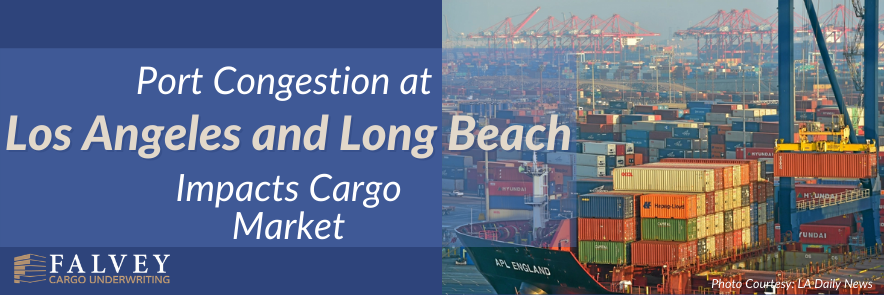The uncertainty experienced in the cargo market due to last year’s U.S.-China trade negotiations has been pushed aside by the global pandemic. Quarantine and stay-at-home orders have contributed to a large surge in online shopping—this, combined with social-distancing requirements for workers, has caused major bottlenecks at ports and throughout the supply chain. Brokers, shippers, and the goods themselves are often being left in limbo for days or weeks.
The nation’s two busiest ports, Los Angeles and Long Beach, offer clear examples of what’s currently happening in the cargo market:
Port of Long Beach
The Port of Long Beach experienced a record-breaking year in 2020. It moved 8,113,315 TEUs, which was a 6.3% year-over-year increase in total cargo volumes. Demand did not slow with the new year—Long Beach reported that January 2021 was its busiest on record, moving 764,006 TEUs to clock a 21.9% year-over-year increase. Imports grew by 17.5% year over year, exports by 7%, and empty containers heading back overseas by 34.6%.
Port of Los Angeles
The nation’s busiest container port, Los Angeles, experienced its fourth busiest year on record in 2020. LA reported moving 9.2 million TEUs in 2020, with port officials specifically calling out that the surge happened largely in the second half of the year. Notably, “third- and fourth-quarter 2020 cargo volumes increased 50% over the first half of the year, with the port handling a remarkable 94% more traffic the week before Christmas than the same week in 2019.”
Similar to Long Beach, LA posted year-over-year increases in January 2021. It processed 835,516 TEUs in January, which is a 3.6% growth.
Conclusion
Global trade has been and continues to be vital for economies and societies—not only to recover from the pandemic, but to move beyond it and return to normalcy. Regrettably, bottlenecks create complications for brokers and shippers. The increasing wait times at major ports exposes goods to higher risk of loss or damage, due to everything from weather-related events to spoilage.
While the queues are unavoidable, you can take measures to protect your goods at every point in the supply chain. Contact us to learn more about comprehensive cargo coverage.




